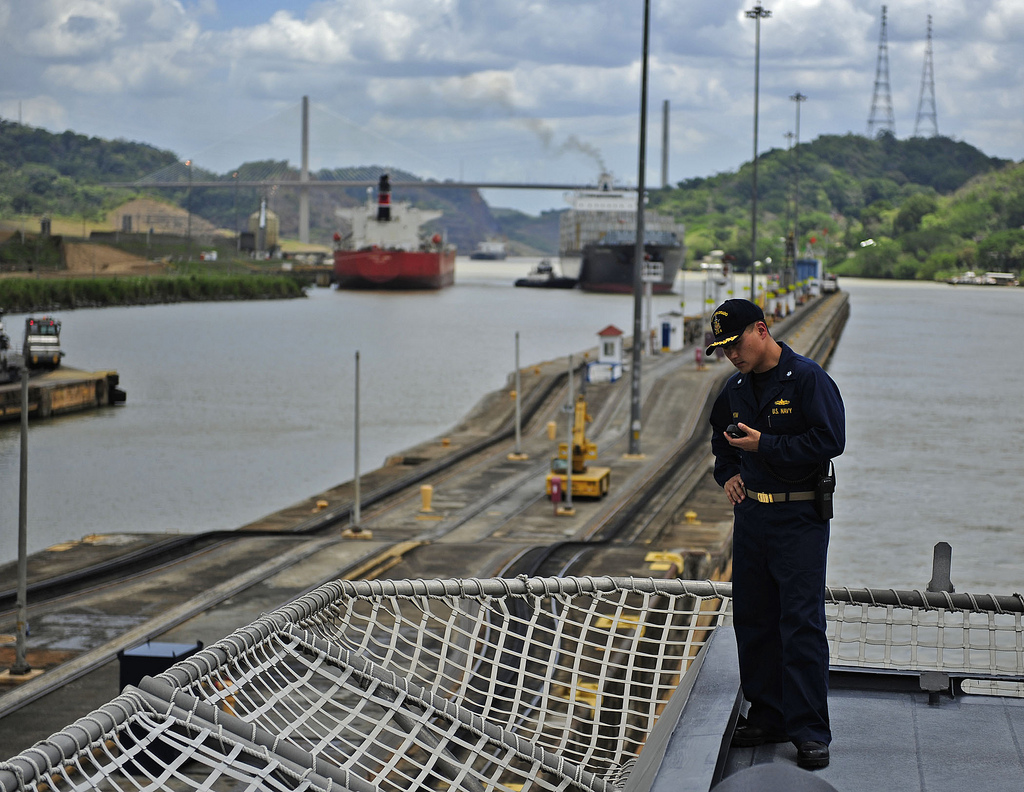The Peninsula
"Bitter Missiles and Economic Needs": Cuba, North Korea and the Weaponry Seizure in the Panama Canal
Published August 7, 2013
Category: North Korea

By José Luis León-Manríquez
To paraphrase the Rolling Stones, the song is not surprising and has been played more than once: the DPRK is a well-known exporter of weapons. Yet this time the singer (Cuba) is brand new. It is also noteworthy that the weapons traveled from Cuba to North Korea and not vice versa. If we add that Cuba-North Korea relations have not been as close as one may think at first glance, the seizure of heavy weaponry in the Chong Chon Gang North Korean ship at the Atlantic entrance of the Panama Canal, on July 15 is a surprising fact. What is the logical explanation for all this? Sometimes the simplest answer is the most difficult to believe. The Cuban government immediately argued that the Chong Chon Gang cargo was made of “obsolete defensive weapons” to be repaired in North Korea and returned to Cuba. This thesis has been partially validated by IHS Jane’s Defence Weekly. According to Jane’s, the pictures released by the Panamanian government showed a radar system for surface-to-air missiles SA-2. That was the type of projectile employed to shoot down a U-2 spy plane over the USSR in May 1960. If Jane’s is correct, the weaponry seized in the Panama Canal is far from state-of-the-art. Disneyland California and EpcotCenter can be relieved.
What is the rationale for such obsolete armament crossing the world? The answer may dwell in the economic realm. The incident may mean that North Korea is seeking additional economic resources via weapons sales and maintenance. This thesis is not so outlandish as long as North Korean economy remains stagnant. According to South Korea’s central bank, the DPRK only grew 0.8% in 2011 and 1.3% in 2012; per capita income hovers around $1000 per year –not far from many poor-income countries in Africa. With South Korean foreign direct investment virtually suspended by geopolitical tensions (inter alia, the Cheonan vessel sinking and the Yeonpyeong islands skirmishes in 2010, the DPRK’s third nuclear test in February and the ensuing war games in March, 2013) and Chinese mistrust towards North Korea on the rise, the diversification of military exports from goods to services may be a resource for the DPRK to get either hard currency or food (in this case, sugar).
Whatever the reason, this new incident may have at least a couple of diplomatic impacts. The first has to do with Cuba-U.S. relations. Despite mutual animosity, Washington-Havana ties had been improving steadily during the Obama administration. Indeed, talks on migration were restarted on July 18, 2013 after almost two years of suspension. Many analysts have warned that the weapons seizure in the Panama Canal may hamper the improvement of the bilateral relation and even lead the U.S. government to keep Cuba on its annual list of states that sponsor terrorism. The incident will also give arguments to the anti-Castroist lobby in the U.S. Congress to pursue the hard line that President Barack Obama has been reluctant to enforce.
The second consequence has a more global scope. The Panama Canal incident sharply puts into question the efficiency of the four rounds of sanctions that the UN Security Council has imposed against North Korea since its first nuclear test in 2006. It remains to be seen whether this incident will spark new attempts to curb the increasing globalization of North Korean weapon industry.
Dr. José Luis León-Manríquez is a Professor of International Studies at the Department of Politics and Culture of the Metropolitan Autonomous University-Xochimilco in Mexico City. He was also the author of a KEI Academic Paper Series report entitled “Similar Policies, Different Outcomes: Two Decades of Reforms in North Korea and Cuba.” The views represented here are the author’s alone.
Photos from Surfacewarrior’s photostream on flickr Creative Commons.
